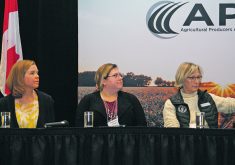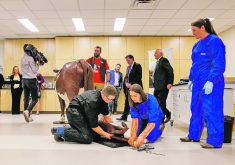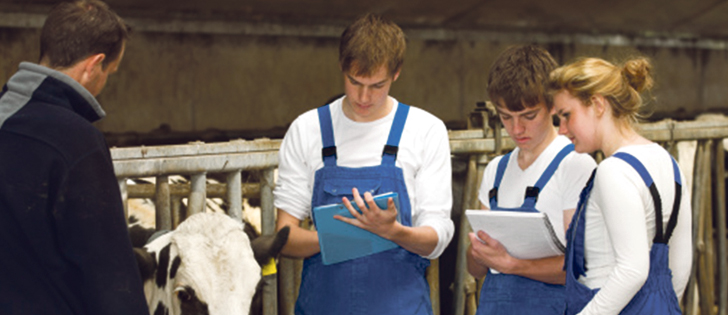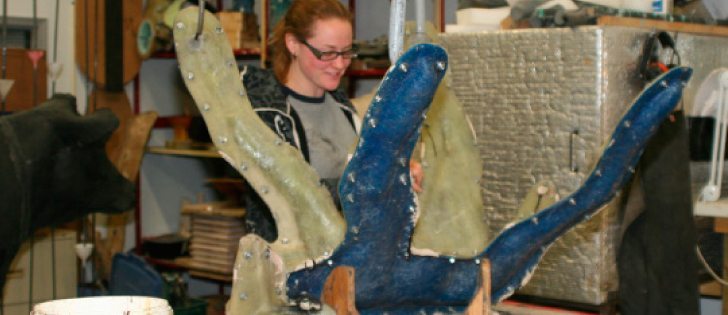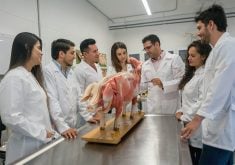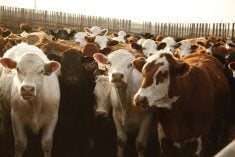Province’s livestock sector has drawn attention to a significant lack of access to veterinarian services in remote areas
The Alberta government plans to provide $59 million to expand the University of Calgary’s Faculty of Veterinary Medicine as part of plans to double student enrolment.
“This is a timely and necessary investment to help address a crisis-level shortage of veterinary professionals in the province,” faculty dean Renate Weller said in a statement. “More specifically, this will address needs in rural communities and shortages in urban centres.”
The faculty is currently at capacity in terms of infrastructure and people, she said. The funding will expand the physical space for the extra students over the next three years, and there is a commitment to allocate money for an additional 50 seats within the veterinary medicine program, she added.
Read Also

Using artificial intelligence in agriculture starts with the right data
Good data is critical as the agriculture sector increasingly adopts new AI technology to drive efficiency, sustainability and trust across all levels of the value chain.
The initiative includes expanding enrolment for veterinary technologists at technical colleges in the province and investments to attract rural students from rural Alberta, said a statement by the Alberta Veterinary Medical Association (ABVMA).
Finance Minister Travis Toews said the $59 million will “address a critical emerging shortage of large animal veterinarians in rural Alberta.” He made the announcement as part of a speech Feb. 24 outlining the 2022 provincial budget.
Alberta Beef Producers chair Melanie Wowk has said access to veterinarians, especially in more remote rural areas, is becoming an animal welfare issue. The shortage affects many livestock sectors including beef, chicken, pork, sheep and goats, she added.
The total economic output of the province’s veterinary sector is estimated to be $2.021 billion, said the ABVMA. “Veterinary medicine plays a critical role in relation to key industries, public health, food security and safety, and sustainability of local communities.”
The first full intake of 100 students at the Faculty of Veterinary Medicine is expected to take place in three years’ time, said Weller. They will be part of a four-year program, meaning they would graduate seven years from now.
The plan includes working on outreach to increase the number of applications from potential students in rural communities. Meanwhile, the infrastructure funding “certainly provides us with the platform to better address shortages in rural Alberta.”
Despite the provincial announcement, there needs to be more government investment in veterinary medicine, said Alberta NDP agriculture, forestry, and rural economic development critic Heather Sweet.
“I think the concern is that it’s going to take three years before that program is going to be up and running, and so the province needs to come forward with a plan as to what they’re going to do to ensure that we have veterinary services in rural Alberta in the interim.”
The Ontario and federal governments announced Jan. 19 they will provide up to $4 million to boost veterinary services in that province through options such as telemedicine and virtual or online care. The Livestock Veterinary Innovation Initiative will pay for up to 35 percent of eligible expenses for Ontario as a whole, and to a maximum of 50 percent in areas identified as underserviced.
Sweet said the $40 million that was once provided through grants for agricultural societies in Alberta has dwindled to $6.9 million. Such societies, which provide facilities and events such as swimming pools, arenas, fairs and rodeos, have suffered from declining revenue due to COVID-19 restrictions on public events.
“So, this government needs to be investing in rural communities and providing the support and services that they need so that people want to stay in those local communities, which means veterinarians will stay in those local communities instead of moving into urban centres.”




